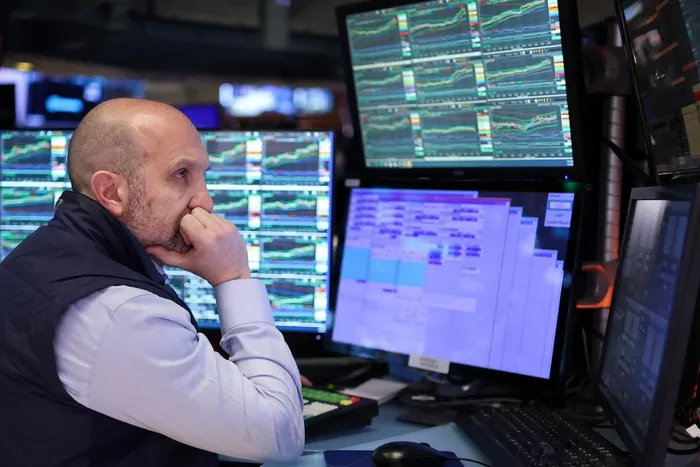Rand on backfoot amidst global market jitters ahead of Trump's tariff salvo
MARKETS

A trader works on the floor of the New York Stock Exchange at the opening bell in New York City on April 1, 2025. US stocks edged lower on April 1, a day before President Donald Trump's pledged unveiling of sweeping tariffs to address what he called unfair trade imbalances with allies and adversaries alike. Traders are nervously preparing for April 2, which Trump has dubbed "liberation day."
Image: CHARLY TRIBALLEAU / AFP
The rand weakened slightly on Tuesday, trading at around R18.40 against the dollar and nearing a one-month low, as investors assessed economic data and awaited details on US President Donald Trump’s proposed tariffs. The currency’s decline was exacerbated by prolonged domestic budget negotiations, with markets jittery ahead of a critical parliamentary vote.
Trump, dubbing Wednesday "Liberation Day," has pledged reciprocal tariffs on "all countries," with speculation pointing to a potential 20% levy on most imports. While no final decision has been confirmed, the uncertainty has unsettled global markets, adding pressure to the rand, already strained by ongoing talks between South Africa’s ruling ANC and the Democratic Alliance over the National Budget.
The rand briefly rallied earlier this week on hopes of a budget breakthrough, but Tuesday’s slide reflected renewed caution. It opened the second quarter at R18.28 to the dollar, R19.78 against the euro, and R23.64 to the pound, underscoring a volatile start to 2025.
Meanwhile, US factory activity shrank in March for the first time this year, with prices rising for a second consecutive month, signaling the impact of existing tariffs. Job openings dropped in February, though layoffs remained low, suggesting a labour market cooling at a measured pace.
Bianca Botes, a director at Citadel Global, said the US Dollar Index fell 0.12% to 104.06, weakening overnight after a tough first quarter. "Markets remain cautious due to limited details on the upcoming tariffs, which could target most countries across the world," she added.
In South Africa, the seasonally adjusted headline Purchasing Managers’ Index (PMI) rose by 4 percentage points in March to 48.7, the highest since October 2024. Though still below the 50-mark indicating expansion, the uptick hints at tentative improvement. Domestic new vehicle sales also surged, reaching 49,493 units - a 12.5% increase from March 2023, or 5 504 more units - marking the best month for sales in two years.
Despite these gains, the rand struggled as investors turned to safe-haven assets amid global unease. Gold hit a new temporary high of $3 145 (R58182) an ounce, up nearly 20% in Q1 2025 - the largest quarterly rise in nearly 40 years.
Linh Tran, a market analyst at XS.com, called it a "significant milestone", driven by "concerns over US tariff measures, global geopolitical instability, expectations of Federal Reserve rate cuts, and strong central bank demand.
"These are all factors driving capital flows into gold as a safe-haven asset, helping the precious metal maintain strong momentum throughout the first quarter," Tran said. The VIX index, a measure of market volatility, climbed 25% in Q1, reflecting investors’ defensive stance. Tran noted that when the VIX exceeds 30, gold prices historically rise by an average of 12% over the next three months.
On the local bourse, the All Share index closed the day 1.48% higher at 89 951 points.
BUSINESS REPORT